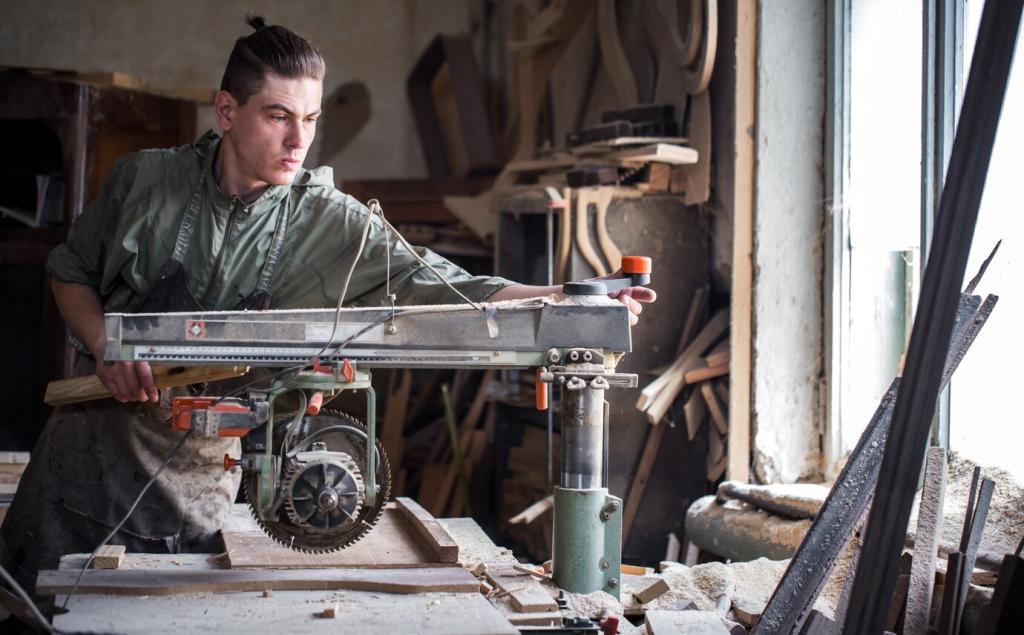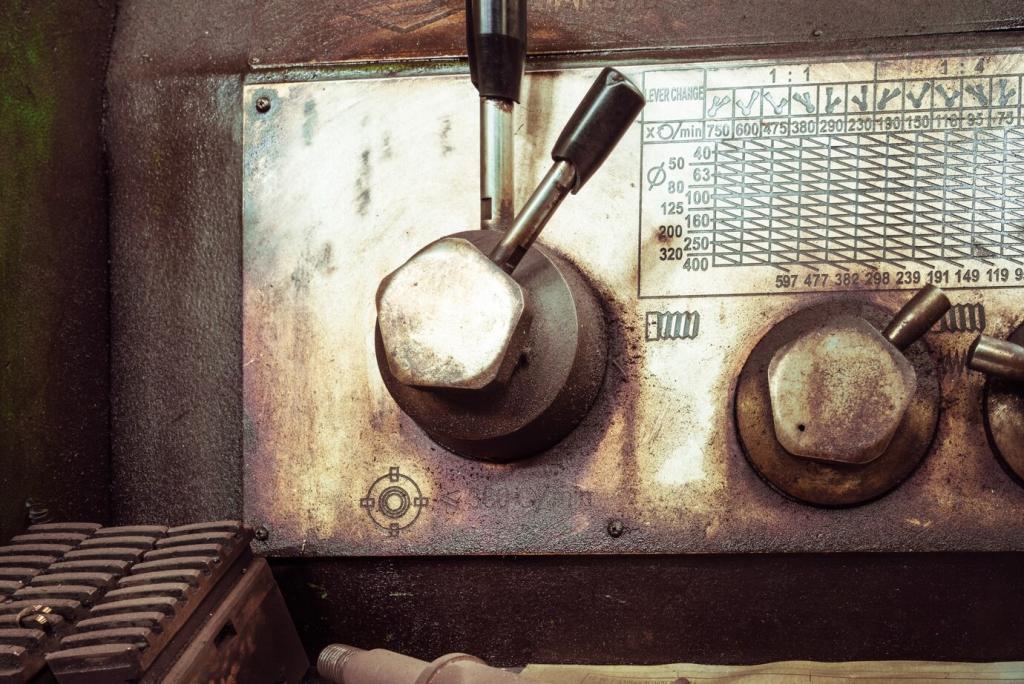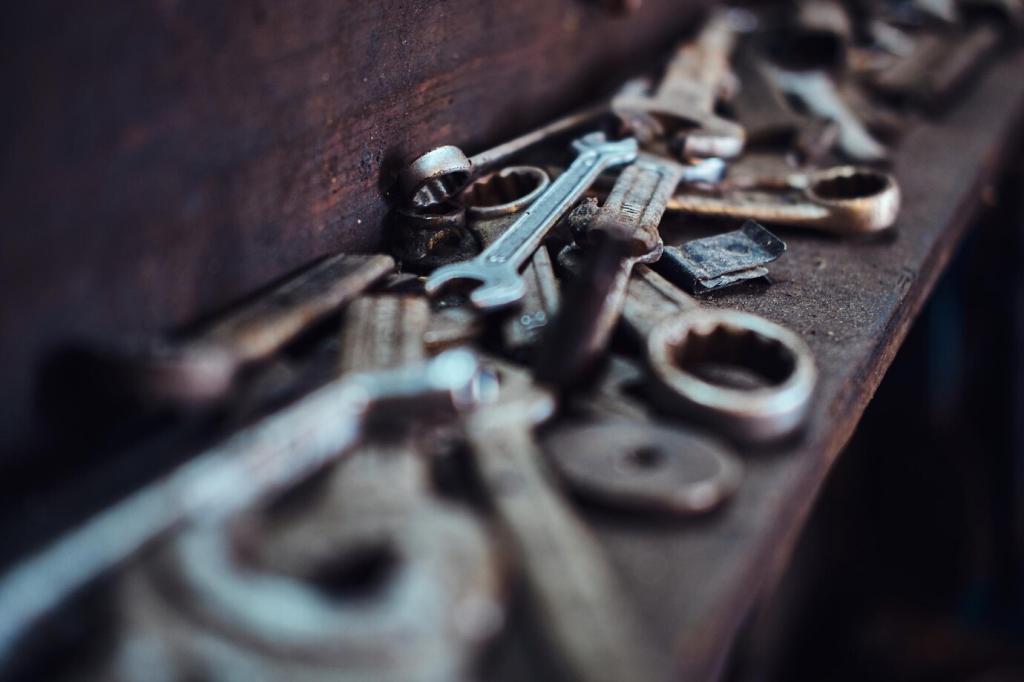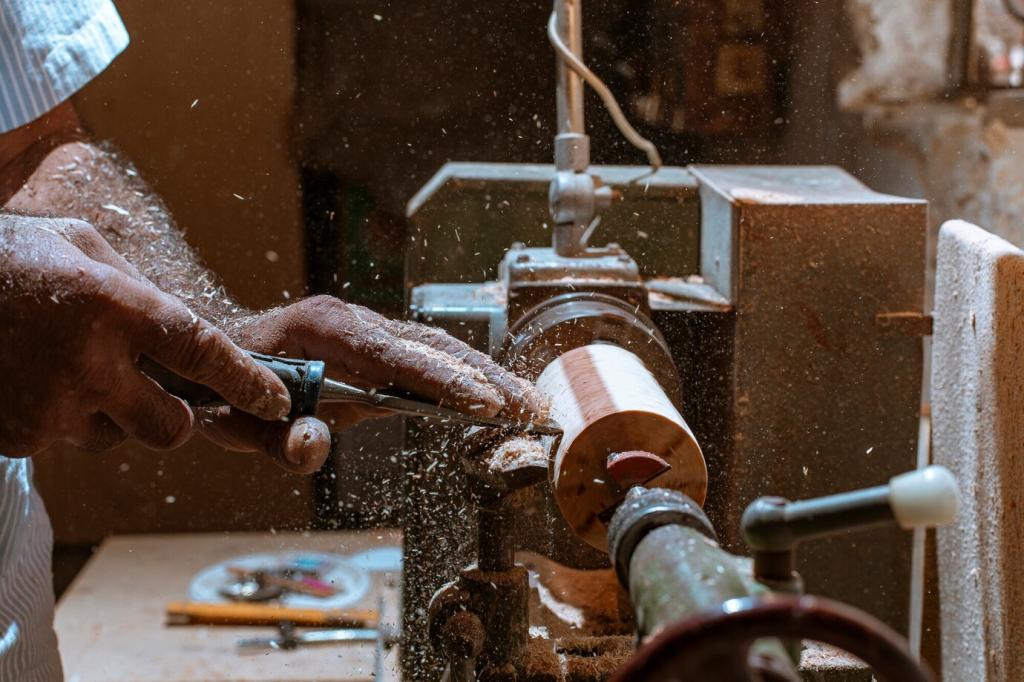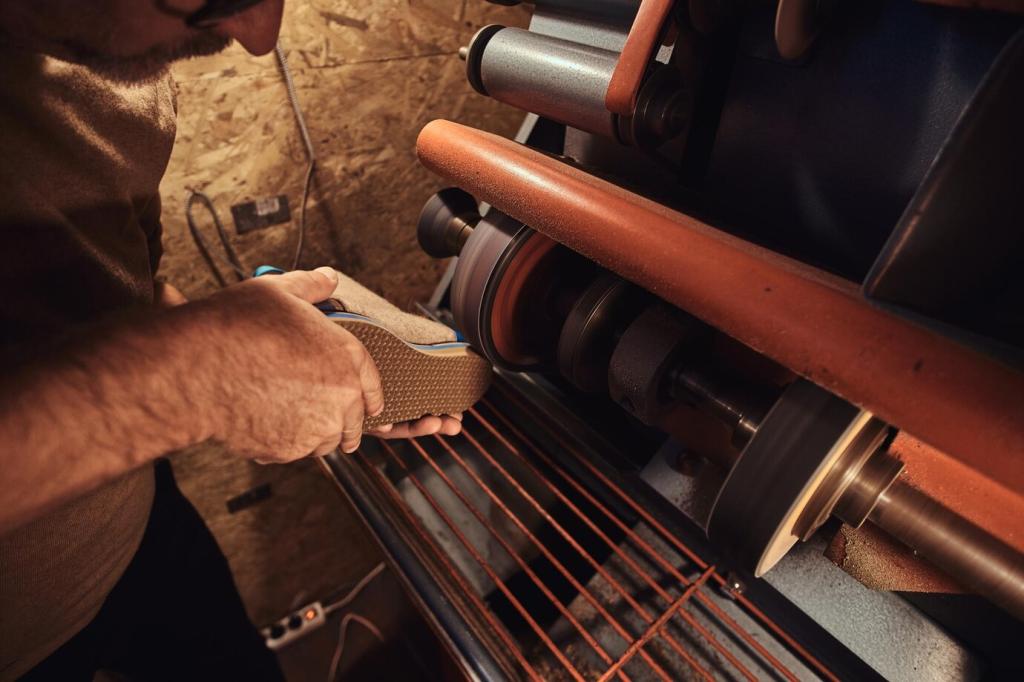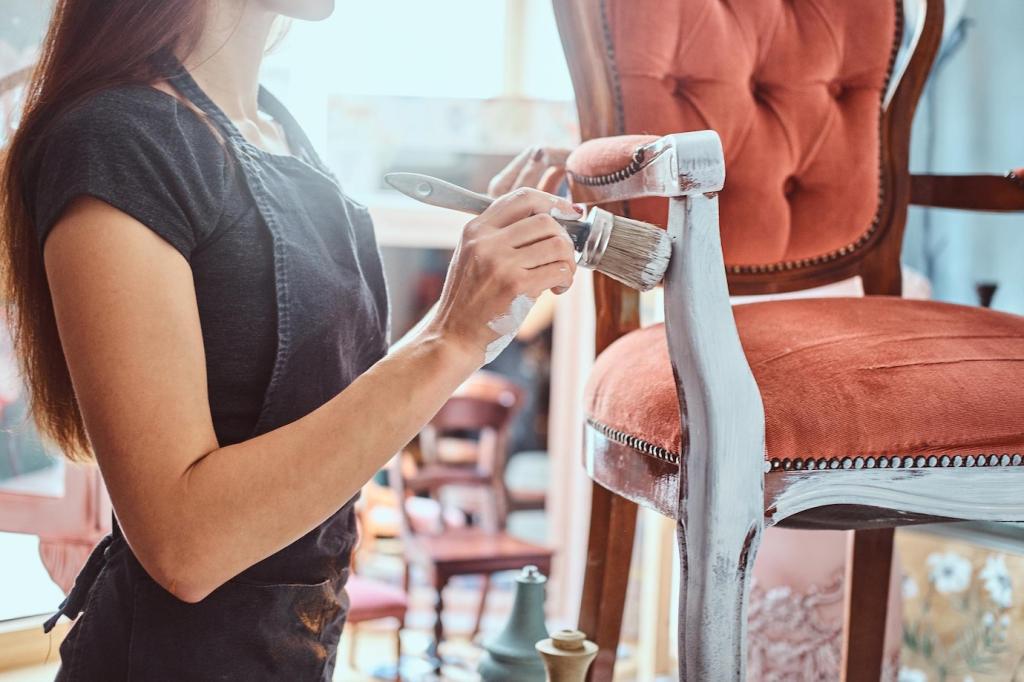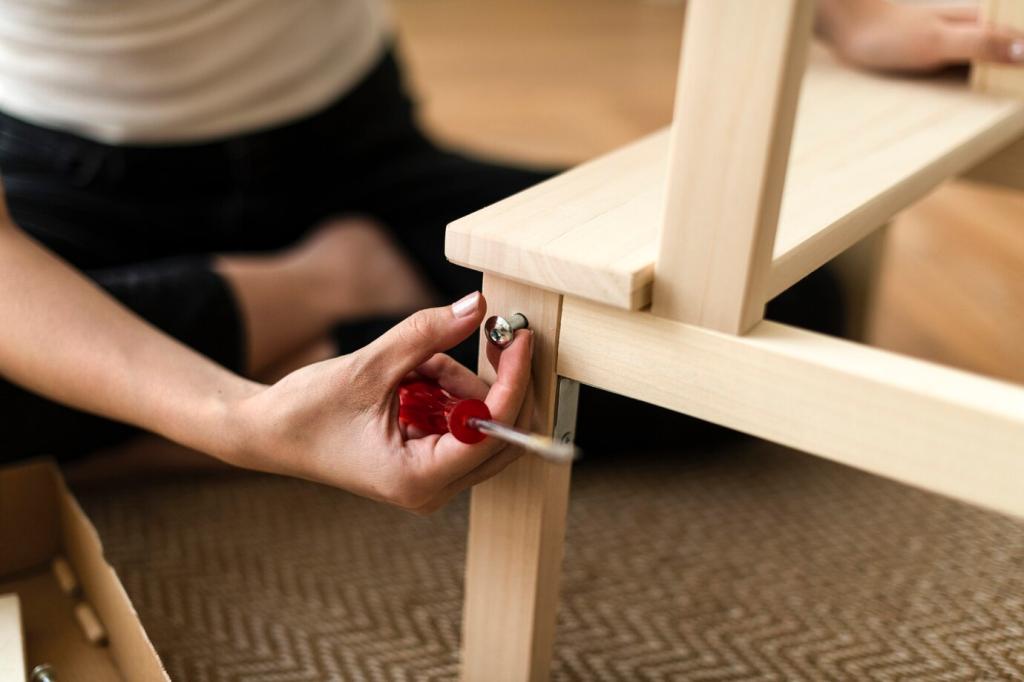Disassembly Without Drama, Reassembly Without Guesswork
Remove drawers, shelves, and detachable legs after photographing their positions. Rest components on padded, clean surfaces. Protect drawer runners with tissue. If a screw resists, stop; penetrating oil and time are kinder than stripped slots or split wood.
Disassembly Without Drama, Reassembly Without Guesswork
Use archival bags, painter’s tape on the bag—not the furniture—and detailed notes: left hinge upper, right hinge lower, two brass escutcheon pins. Tuck packets into a dedicated bin so small treasures are never misplaced mid-move.

